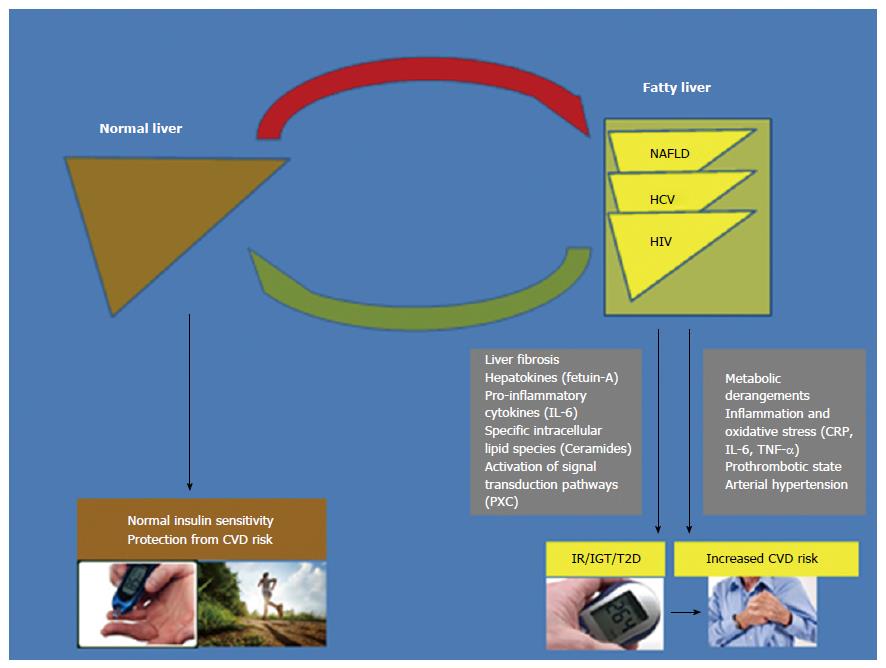Copyright
©The Author(s) 2016.
World J Gastroenterol. Nov 28, 2016; 22(44): 9674-9693
Published online Nov 28, 2016. doi: 10.3748/wjg.v22.i44.9674
Published online Nov 28, 2016. doi: 10.3748/wjg.v22.i44.9674
Figure 1 Mechanisms underlying type 2 diabetes and cardiovascular disease in nonalcoholic fatty liver disease and virus-associated fatty liver disease.
This cartoon schematically depicts the nonalcoholic fatty liver disease (NAFLD)-derived paradigm supporting a link between NAFLD and the development of type 2 diabetes (T2D) and cardiovascular disease (CVD). Based on this model, the presence of NAFLD per se plays a role in the pathogenesis of these two cardiometabolic complications. This possibly occurs through the systemic release of several pro-inflammatory/pro-coagulant mediators from the steatotic/inflamed/fibrotic liver or through the contribution of NAFLD itself to insulin resistance and atherogenic dyslipidaemia. Virus-associated fatty liver disease (VAFLD) identifies fatty liver associated with either chronic HCV or HIV infections. The novel comparative data presented in this review support the assertion that VAFLD conceptually mimics NAFLD and thus might partly contribute (along with specific viral factors related to HCV and HIV) to the pathogenesis of T2D and CVD also in this group of patients. The putative pathogenic mechanisms illustrated in the right hand side of the figure have been predominantly shown in NAFLD[37,104] and, by inference, should also be investigated in VAFLD.
- Citation: Lonardo A, Ballestri S, Guaraldi G, Nascimbeni F, Romagnoli D, Zona S, Targher G. Fatty liver is associated with an increased risk of diabetes and cardiovascular disease - Evidence from three different disease models: NAFLD, HCV and HIV. World J Gastroenterol 2016; 22(44): 9674-9693
- URL: https://www.wjgnet.com/1007-9327/full/v22/i44/9674.htm
- DOI: https://dx.doi.org/10.3748/wjg.v22.i44.9674









